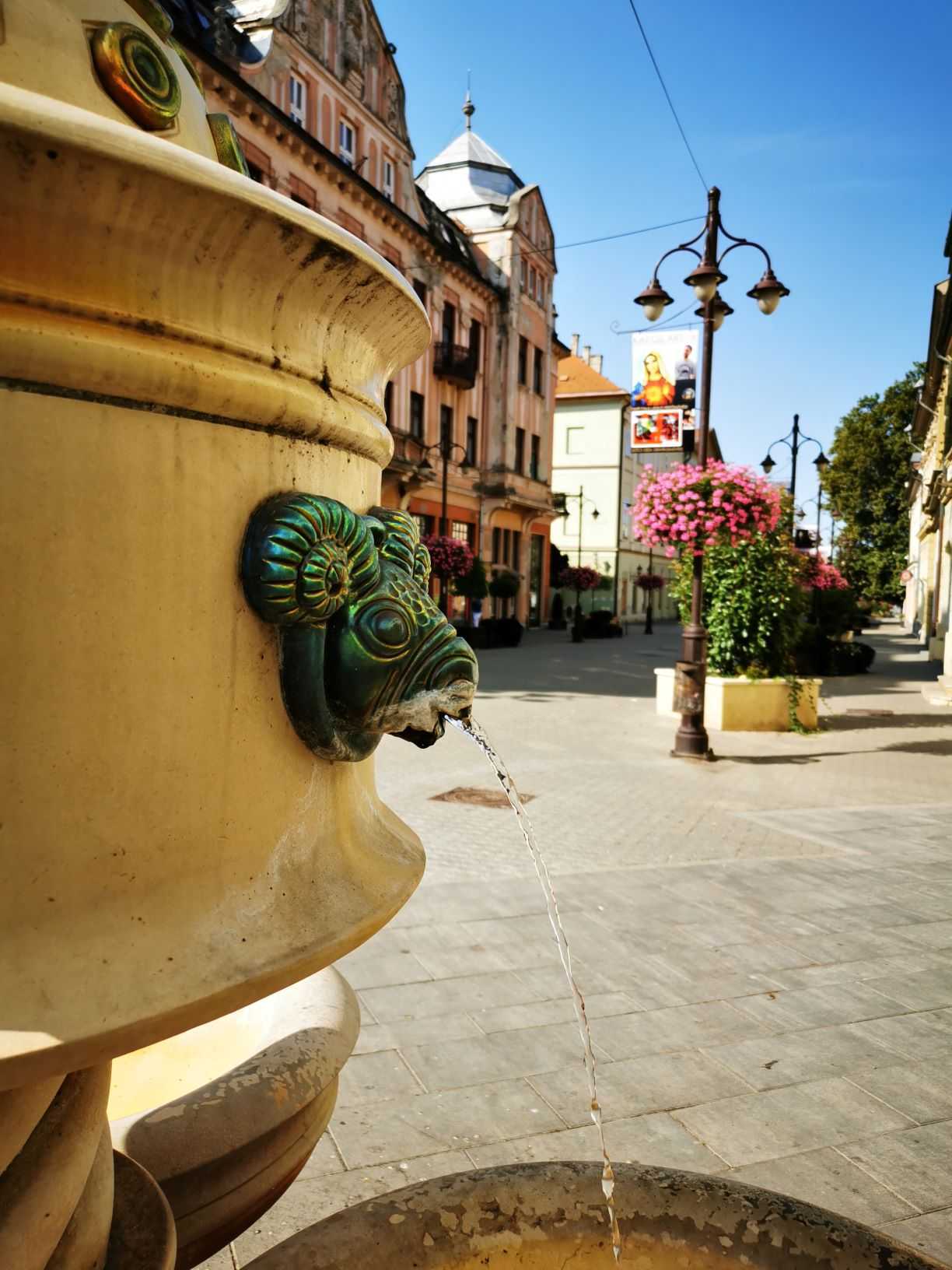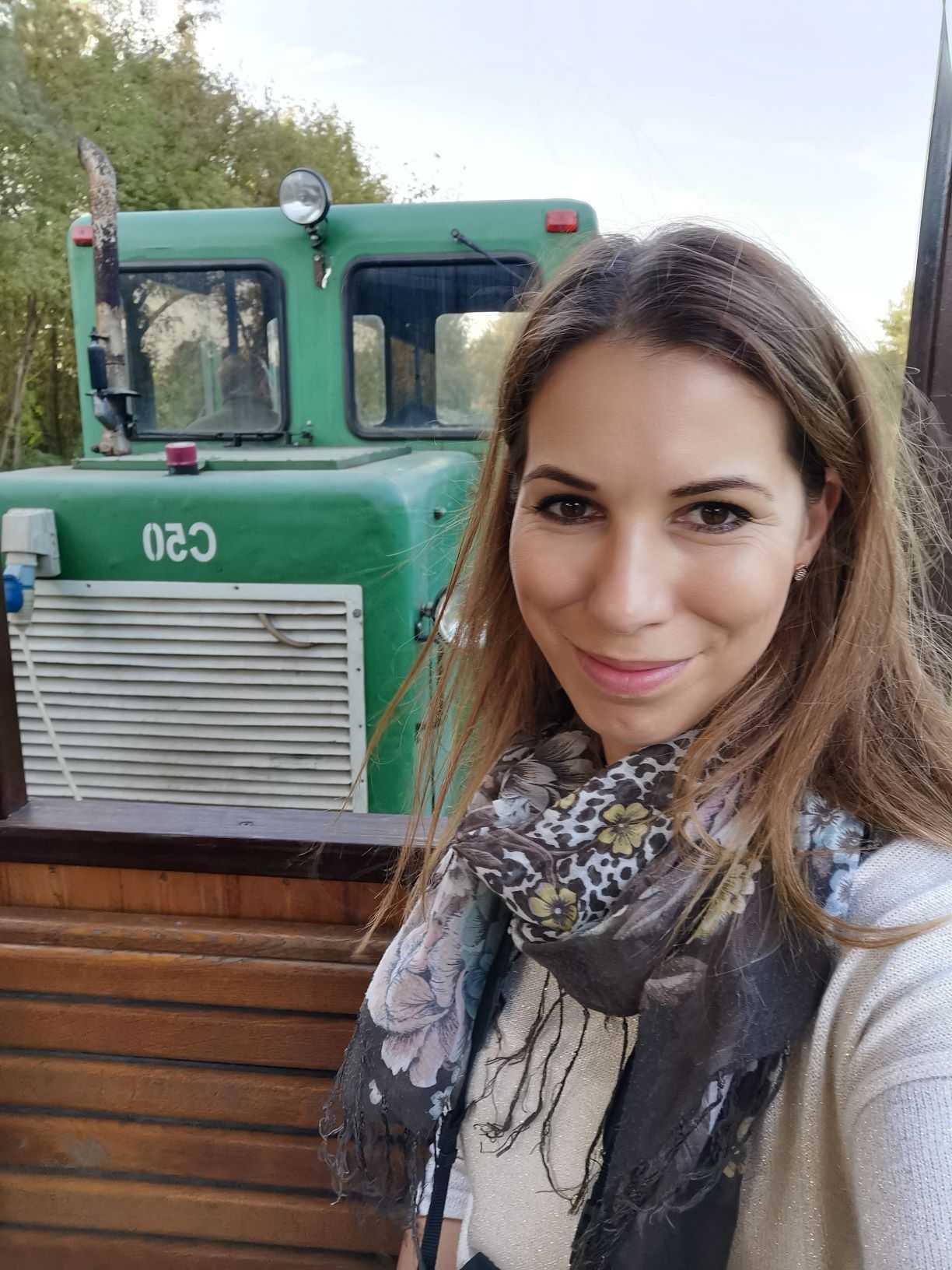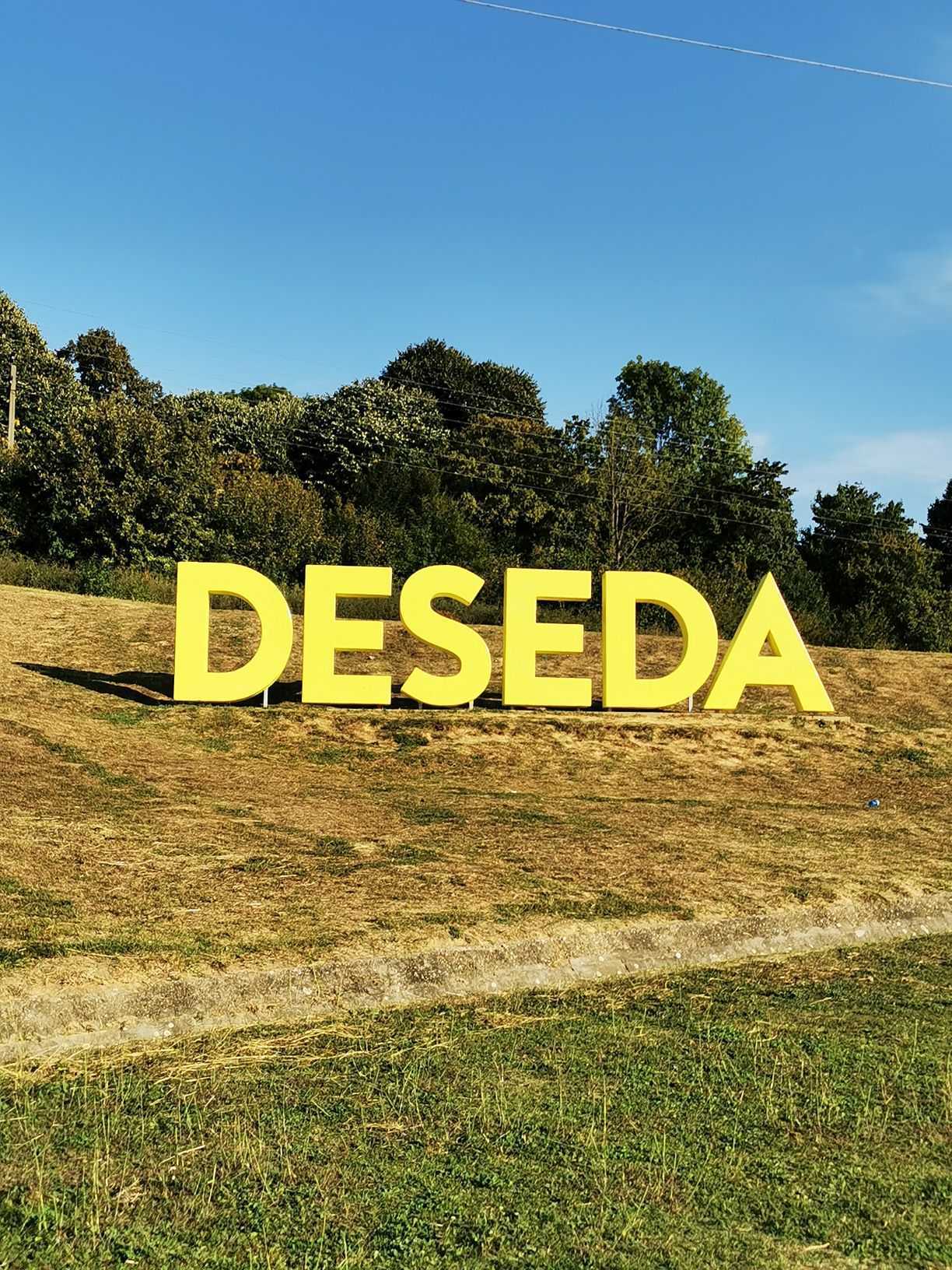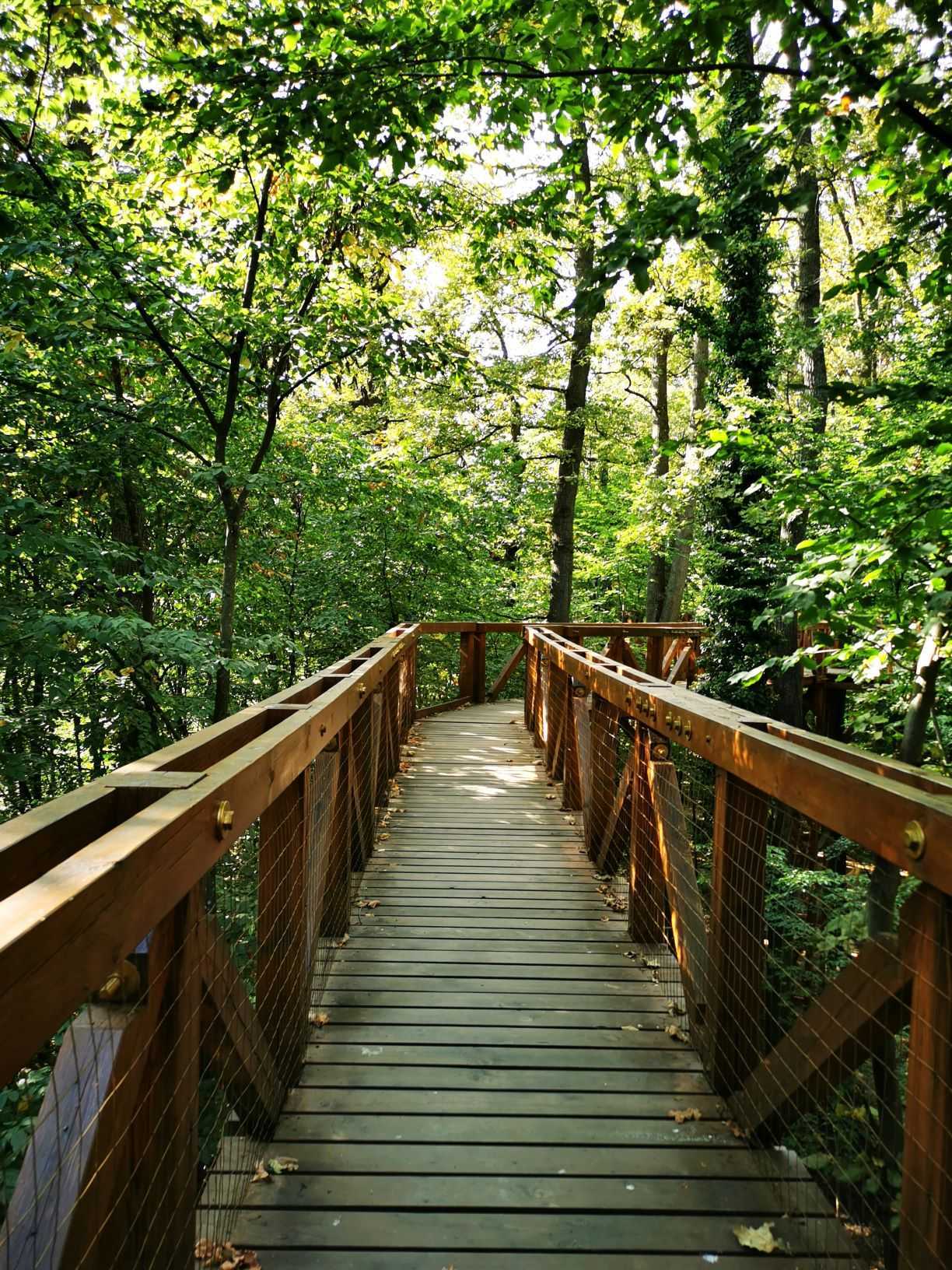Kaposvár is one of the most important settlements in Transdanubia and although its roots go back quite far, it is considered a very undervalued region on the tourist map of the country. The city was first mentioned in 1009 by the papers and, like ancient Rome, was built on seven hills. In the 13th century, there was still a castle in the Zselic Valley, the traces of which are no longer visible.
But Kaposvár still offers open gates and is worth visiting, because not only the city, but also its surroundings are full of beautiful sights. Here are 10 places and 10 descriptions of my favorite places around Kaposvár, which I discovered during my recent trip in Hungary.
Road 67
A double-digit main road is not a separate attraction in itself. But if you think of the Republic song and combine the two, then it already has a place in the list of attractions in Somogy County. On route 67 from Mernye to Kaposvár, the chorus of the famous song are heard, brought to life by the encounter between the engraved pits in the asphalt and the car tires. Bitumen music and the musical journey are also warned by a sign well in advance, which, if approached at a steady speed, can really be played on the famous chorus of the Republic song. Here’s my work, which I composed on my way to Kaposvár:

Secession buildings
Kaposvár was largely built at the turn of the 19th and 20th centuries, from which we were left with many beautiful buildings. Although it does not compete with Riga (I wrote about it here), the city centre won the award for the most beautiful main street of Hungary in 2010.
The Csiky Gergely Theatre, the Rainbow Cinema and Music House, the Town Hall, the House of Technology are gems of art nouveau and eclectic styles, but on the streets of Ady Endre, Dozsa György and Kontrássy it is also worth raising your eyes to the sky for a special window or façade ornament.
From spring to late autumn, the downtown is full with flowers and this experience is further enhanced by imposing fountains and drinking water wells, including a beautiful Zsolnay creation.
The Cathedral of the Assumption was closed for renovation during my visit, but Kossuth Square, with its music clock, hotels and cosy cafés, is guaranteed to steal into everyone’s heart. I would like to highlight one more place from the list of buildings, the Convent, which is one of the most beautiful monuments in Kaposvár, and our famous writer István Fekete, among others, has studied here.
At the level of mention, one of the city’s special attractions is the Benedictine Abbey of Kaposszentjakab, the oldest part of which dates back to 1061. Unfortunately, the area has been closed for years, so I was able to take a photo of the exterior of the ruins only.
Rippl-Rónai József Memorial House and Villa
The painting giant of the 20th century, József Rippl-Rónai, has a thousand ties to Kaposvár. In 1908, he bought the Villa of Rome, where he spent the summers with his French wife, Baudrion Lazarine. He created in the beautiful art house built in the park, while the six-room villa was home to the artist’s friends.
József Rippl-Rónai not only painted, but also designed glass windows, the imprints of which are preserved by the Ernst Museum and the Andrássy dining room in the villa. Decorated with original furniture, tiled stoves and more than 90 works of art, the museum offers a rich insight into the painter’s life.
In the city centre of Kaposvár there is also a Rippl-Rónai Memorial Museum, which hosts exhibitions of folk art, nature and art through three floors, including the works of Ferenc Martyn and János Vaszary. In Kaposvár.
It is now a tradition to have the Rippl-Rónai festival held every year in May. During the artistic days, not only do they evoke the memories of the city-related artists, but also the streets are enchanted by painters, artisans and performers thus creating a Mediterranean atmosphere.
Szenna Open-Air Museum
The open-air museum in Senna, 8 km far from Kaposvár, is unique on the Hungarian level too. The village museum was created by a local initiative to save the values and traditions of the past through the present into the future.
The first timbered residential building was placed here in 1976 and now there are five inner-Somogy, Drava and Zselic ports in the museum area, furnished with original furniture.
In addition to the houses from Rinyakovács, Kisbajom, Csököly, Nagykorpád, Somogyszob, there is also a bell tower, a press house from Segesd and a Calvinist church with cassette ceilings from 1785. The latter was one of the jewels of the sights for me.
More than 100 frescoes and floral decorations were re-painted according to the original condition by István Z. Soós, while the wooden decorations were restored by carpenter János Nagyváti. In 1982, the Senna Open-Air Museum received the Europe-Nostra Prize for the successful replanting of village buildings.
Boronka Nature Reserve and forest train
The area of more than 8,000 hectares has been under protection since 1991 and now is home to many species of animals and plants. In the stagnant waters there are moors, willows and alders, while in the higher parts there are beautiful oak forests.
The area is crossed by several blue hiking trails, but it is also worth walking through the Tőzike trail from Kakpuszta, where in the spring you can see rare, flowering plants such as dogtooth violet, liverwort, mezereum, scilla or spring snowflake.
In autumn, the flowers are replaced by the animals, including the deer, whose characteristic trout in September raises the silence of the forests of Mesztegnyő. On one of the most upbeat railways of Hungary you can explore a 9-kilometer forest trail and admire the forests and hidden lakes of Somogy from open carriages. I took a deer trout program as a night ride and I can assure you that it was one of the highlights of my trip in Somogy.
Old smelter in Somogyfajsz
The title covers a memorial place of the Hungarian Conquest that are well preserved piece of our past. Excavations started in the forest in 1988 in the area of the hut, during which iron metallurgic finds used from the Avar era to the Árpád era (7-12th centuries) were found.
The art of iron melting was discovered in Asia in the 3rd millennium B.C.E and it is believed that the science of metal making was transferred to Europe from the Armenian highlands. The grass ore fields of the Carpathian Basin were discovered and used by the eastern Avar-Onogur people, who settled here in the 7th century. This oven-kind iron melting technique was typical until the Conquest, the traces of which can be seen in Somogyfajsz.
Unfortunately, the museum is no longer open to visitors due to financian problems. However, due to a chance and lucky encounter, I ran into a man at Kund Castle, who was kind enough to open the door of the smelter for me. The building on the outskirts of the village offers an impressive view from the outside, not to mention the forests around it, which are said to have inspired István Fekete’s many novels.
Deer farm in Bőszénfa
The small village of Bőszénfa, situated in the hills of Zselic, is home to one of the cutest forest animals in Hungary, namely deers. Wildlife Management Centre of University of Kaposvár has a history of more than two decades here and the place serves essentially educational, research and production purposes.A
The deer farm is open all year round to animal and nature lovers. A guided tour includes special activities such as petting and deer feeding, as well as deer watching from and carriages.
 However, deer farm in Bőszénfa hosts not only deers, but also wild boars, mouflons, alpacas and a wide range of pets (goats, rabbits, lambs, geese) on the 1300-hectare park.
However, deer farm in Bőszénfa hosts not only deers, but also wild boars, mouflons, alpacas and a wide range of pets (goats, rabbits, lambs, geese) on the 1300-hectare park.
Lake Deseda
Not far from Kaposvár you can find Hungary’s longest artificial lake, Deseda, which is a popular place for active recreation and relaxation. In summer, water sports enthusiasts visit the lake area, while in winter you can skate on the frozen surface of the lake.
One of the main sights of Lake Deseda is the István Fekete Visitor Centre, which features interactive exhibitions and a live oak tree that fills the entire height of the building. In the exhibition space, the fauna of Somogy comes to life and children can get acquainted with the wildlife of Deseda in an interactive way. If you prefer to get acquainted with the inhabitants of the lake in nature, you can explore the longest artificial water surface in Hungary by rented boat too.
Otter park of Petesmalom
Petesmalom is a special sandy area of Somogy, where former swamps and milling areas have survived undisturbed to this day. The area, which is connected to 14 smaller and larger lakes, is home to a number of protected animal species, including Eurasian otters.
The otter has now become one of Europe’s most endangered predator mammals, thanks to hunters chasing them for its fur, while fishermen have been chasing them for the stolen fish. In Petesmalom, that is the only otter shelter in Hungary, those animals are treated that have lost their natural habitat, injured, or were found at most unexpected places (e.g. in a rubbish bin in Kaposvár). Otters are given a second opportunity to live here, where, after careful care, specimens capable of independent life are released back into nature. In addition to the special residents, you can also explore a 3 km long nature trail, where you can watch wild birds and nesting islands.
Canopy walk of Kaszó
Kaszó is also called as green heart of Somogy Country because of its huge forests, that hide a special attraction. A 124-metre-long trail has been built in the canopy of trees, which can be visited free of charge at all times of the year. The canopy trail was built of 200 cubic meters of wood and was opened in 2017. Besides the complex looks amazing you can learn about the forest life too in an interactive way. After the canopy adventures, it is also worth going through the barefoot trail on the ground. Music lovers can also play a dendrofon in the middle of the forest by tapping various wooden elements.
In addition to the above-mentioned attractions, there are many other places in the vicinity of Kaposvár (e.g. Zselic Star Park, Igal Spa, Katica Farm), which are waiting to be explored. I continued my trip to Somogy on the southern shore of Lake Balaton, from where I show you new places in the form of a separate blog post.






















































